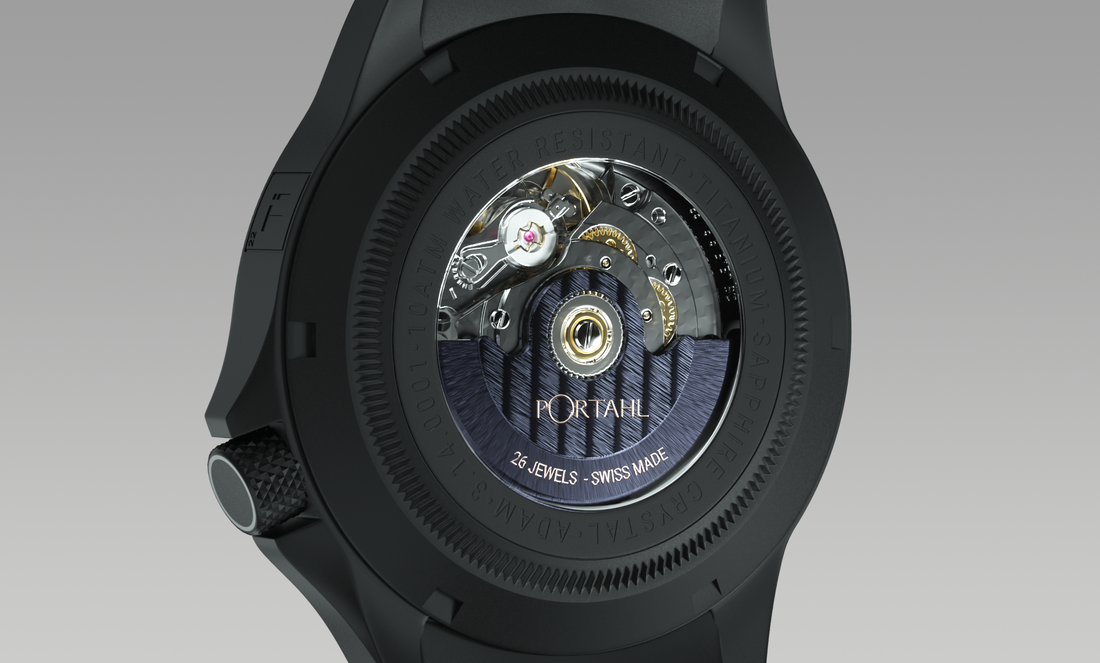
How Do Mechanical Watches Store Power? The Mechanics And Latest Advancements
Mechanical watches are marvels of engineering, intricate devices where each component plays a crucial role. One of the most critical aspects of a mechanical watch's functionality is its ability to store power, which ensures the watch continues to function accurately even when it's not being worn or wound. But how does a mechanical watch store power, and what determines the duration of this power reserve? Let's delve into these intricacies and also try to understand the latest advancements in this field.
The Mechanics of Power Storage
At the heart of every mechanical watch, whether manual or automatic, is the mainspring. This coiled spring is the powerhouse of the watch, storing mechanical energy and releasing it gradually to power the watch's functions. When you wind a watch, you're essentially tightening this spring, infusing it with potential energy ready to be expended.
The duration of a watch's power reserve depends on several factors, including the length and thickness of the mainspring and the efficiency of the watch's movement. Typically, most high quality mechanical watches offer a power reserve between 40 and 50 hours, though some models boast reserves extending up to several days or even weeks.
Balancing Power Reserve with Performance
However, achieving a longer power reserve isn't without its challenges. A longer mainspring can require a larger watch case, potentially impacting the watch's aesthetic and comfort. Additionally, maintaining consistent energy release with a longer mainspring can be technically challenging, necessitating innovative solutions in the movement's design.
Moreover, there's a delicate balance between the power reserve and the watch's accuracy. The mainspring's force diminishes as it unwinds, which can lead to variations in accuracy if not meticulously regulated. Watchmakers often have to strike a balance between an extended power reserve and the consistent, precise timekeeping that luxury mechanical watches are renowned for.
Innovations in Power Reserve
The quest for longer power reserves has led to remarkable innovations. For instance, the IWC Big Pilot's watch features a seven-day power reserve, a significant achievement in mechanical watchmaking. Such feats are made possible through innovations in mainspring material, with newer alloys allowing for stronger, more durable springs that can store more energy without increasing the spring's size.
Another notable development is the use of multiple mainsprings or barrels, as seen in watches like the Hublot MP-05 LaFerrari, which boasts an astounding 50-day power reserve. These innovations, while currently found in top-end watches, signify the potential future of mechanical watchmaking, where extended power reserves could become the norm.
pOrtahl's Commitment to Precision and Power
At pOrtahl we believe that the power reserve is one of the more important aspects of a quality automatic watch. Our view is that it should store enoug power to go a lazy Sunday without your watch. That's why pOrtahl's Peacemaker uses the Swiss made STP1-11 movement.
Known for its reliability and precision, the STP1-11 operates at a high beat rate, contributing to a smoother sweep of the second hand and improved accuracy. It also boasts a substantial power reserve of 44 hours, allowing the watch to keep running for an extended period without being worn or wound. More than enough for that lazy Sunday!
Conclusion
Mechanical watches, intricate blends of art and engineering, hinge significantly on their power reserves, with the mainspring and movement efficiency playing pivotal roles. Achieving longer power reserves is a nuanced task, balancing size, design, energy consistency, and accuracy, with innovations like new mainspring materials and multiple barrels pushing these boundaries. However, a watch's merit isn't solely in its power reserve; accuracy, durability, brand heritage, and aesthetics are equally vital.
pOrtahl's Peacemaker, with its STP1-11 movement, embodies this balance, merging reliable performance with a notable power reserve, reflecting the brand's dedication to harmonizing tradition with technological progress. As mechanical watches evolve, they promise a future of enhanced functionality and beauty, continuing to captivate both connoisseurs and casual enthusiasts.
